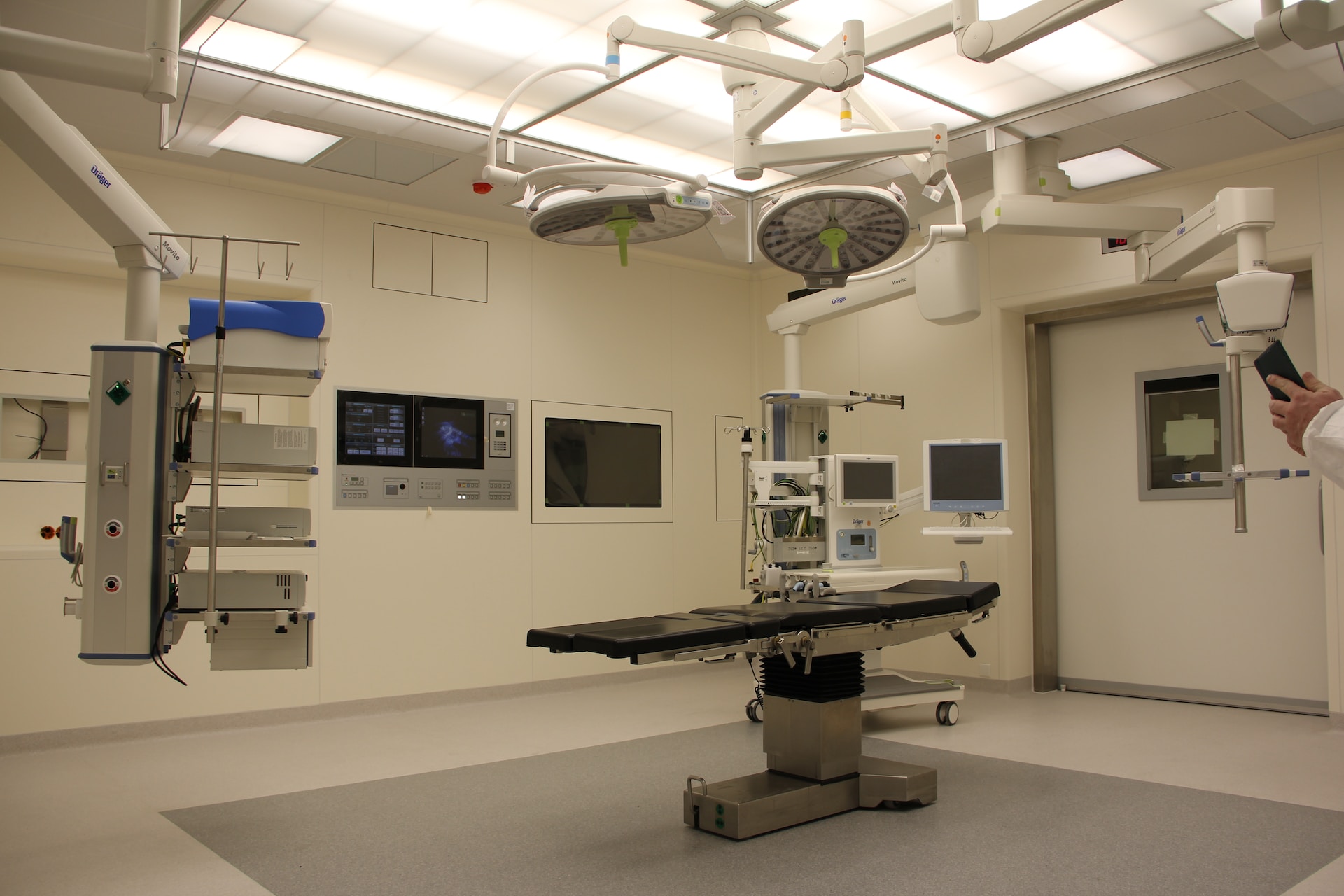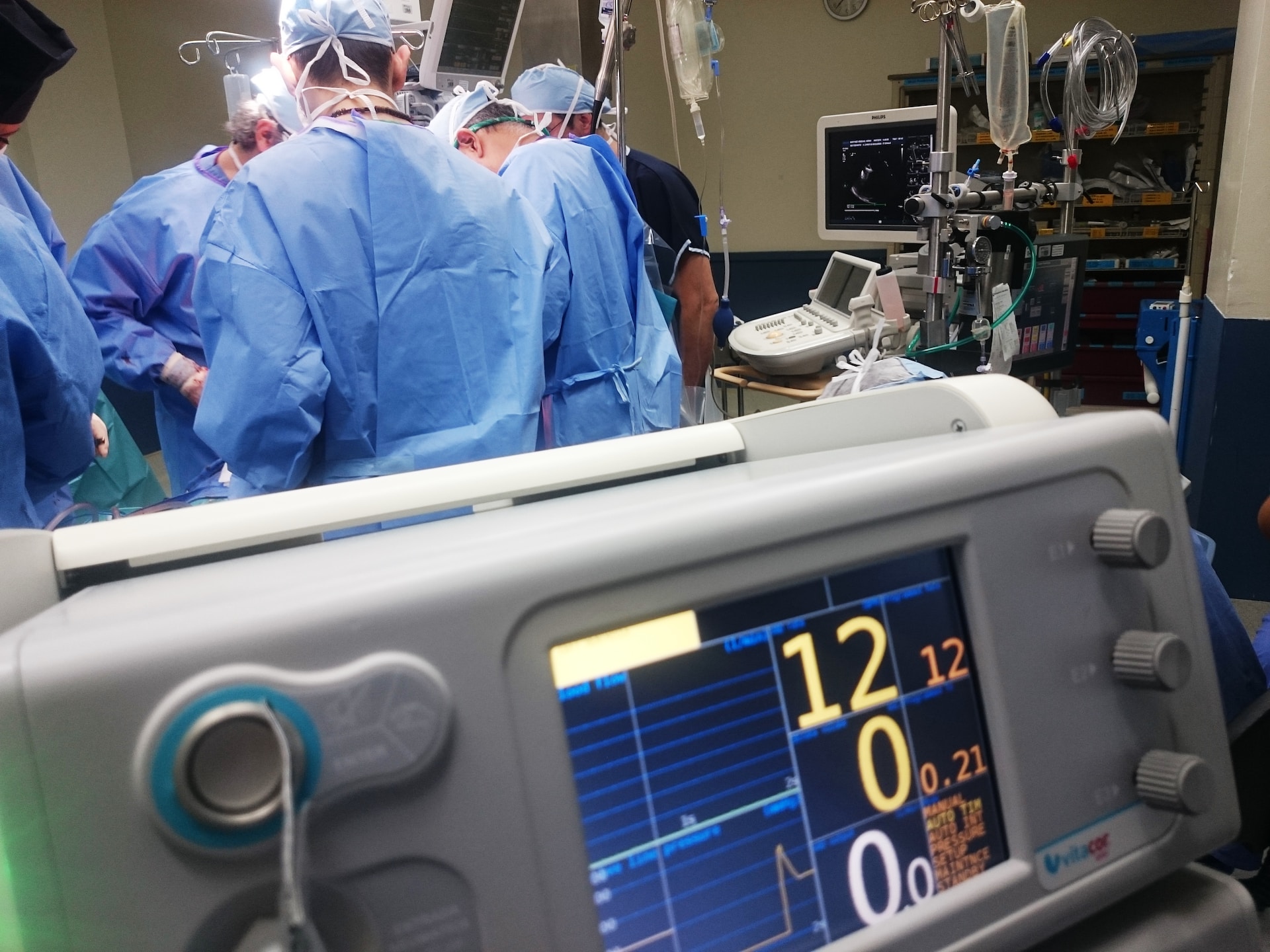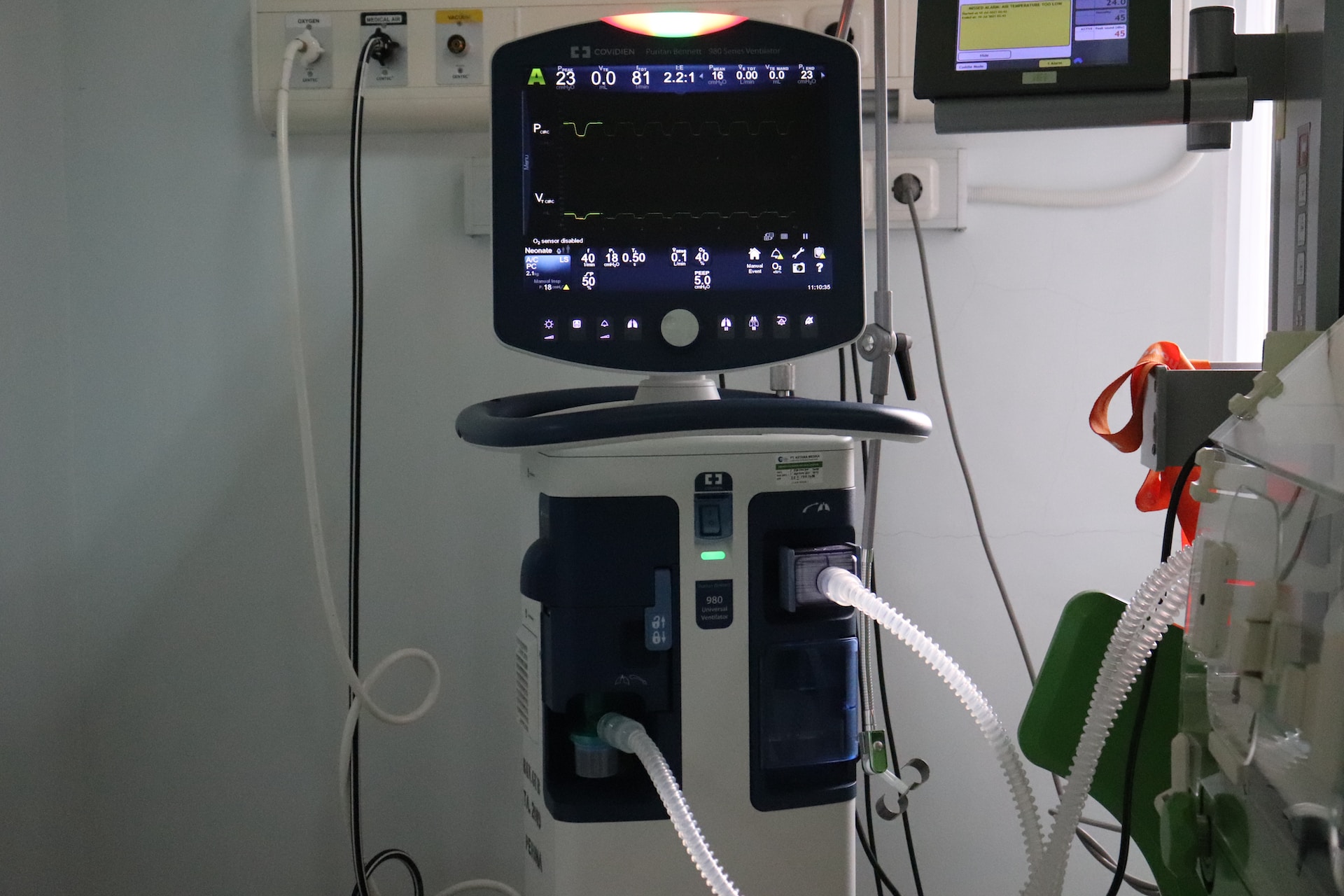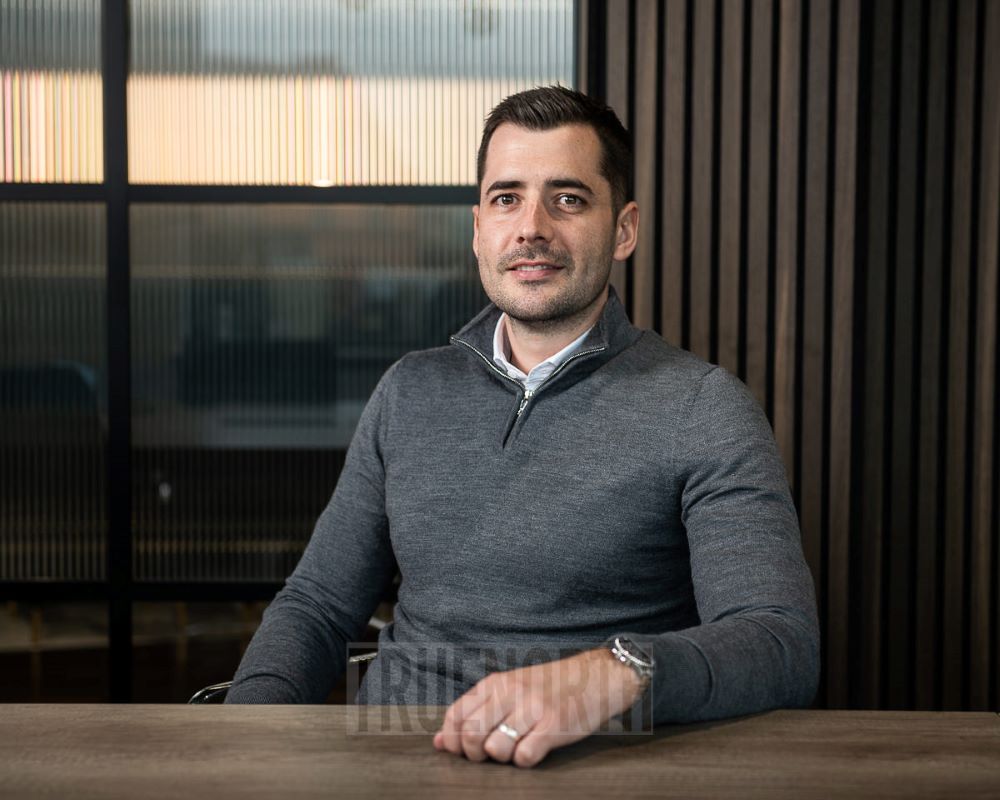What is the Best Process to Recruit for Medtech Jobs?
13 Nov, 202311 minutesWith the global medtech jobs market anticipated to grow to $719bn by 2029, many may be wonde...

With the global medtech jobs market anticipated to grow to $719bn by 2029, many may be wondering how this innovative and fast-paced industry will be able to source and hold onto the talent they need to empower their evolution.
European nations, such as Germany, France, and Italy, as well as the UK, APAC, and US regions, are coming face-to-face with the skills gap that has impacted many other tech-forward industries, meaning that business leaders looking to attract high-quality candidates they need to remain competitive will have to revisit their medtech recruitment strategies.
In this guide, we’ll look at a step-by-step guide to recruiting for medtech jobs, offering some of our advice based on the best practices from our business consultancy experts. Alongside this, we’ll take a quick detour to explore the roles that are driving innovation in healthcare provision.
The Best Medtech Recruitment Process
With the supply of talent expected not to meet the future demand of medtech organisations—and a largely metropolitan concentration of companies leading to a narrower pool of candidates from this already constrained selection—business leaders must reflect on their medtech recruitment strategies.
Without ensuring that they’re innovating in how they connect with potential employees in the same way that they innovate on novel treatments and devices, they’re unlikely to be able to effectively fill their vacant medtech jobs, ultimately harming their ability to compete within an increasingly challenging market.
As PricewaterhouseCoopers has noted in their report on the future of medtech, organisations within the industry that are looking to grow their revenue beyond traditional returns must leverage truly disruptive trends—and bring on board the fresh talent that can drive that evolution.
The Five Steps of Recruiting for Medtech Jobs
So, how can organisations ensure they’re bringing on board candidates—whether on a contract or permanent basis—that are the perfect fit, both in terms of skills and competencies and in terms of their cultural suitability and ambition?
In short, the innovative medtech jobs that the present and future hold require a strategic approach to hiring.
Let’s look at a step-by-step guide to the five crucial aspects of medtech recruitment that business leaders must keep in mind when they’re looking to connect with professionals at any level of seniority, from early-career graduates to time-served senior executives.
1. Clear Job Requirements are Crucial
Start with the fundamentals, make sure you can run before you walk, and get the basics right. An innovative medtech recruitment strategy is only as robust as the foundation it’s built upon, so make sure that you’re revisiting job descriptions and person specifications and rebuilding them for a talent market that’s increasingly challenging to navigate.
This is especially true if you’re looking to connect with executive-level and senior candidates who will be searching for specific terminology and industry jargon that will accurately describe the responsibilities and duties they’ll be tasked with in medtech positions.
This will not only help to ensure that you’re saving time by not having to screen candidates who are a poor fit, but it sets clear expectations and gives candidates an idea of the targets that will be used to measure their success before they even set foot in the office or workshop.
Research from CB Insights, reported on in Forbes, has shown that 14% of startup failures result from a lack of the right talent. If you’re looking to avoid joining this list, make sure that you’re listing the actual skill requirements for your medtech jobs, that your descriptions and person specifications are free of bias, and outline how the role fits into the whole business structure.
2. Foster an Unforgettable Employer Brand
Your employee value proposition (EVP) more-or-less outlines the why of recruitment: why should that candidate join your business over a competitor?
When candidates understand more about your organisation and how medtech jobs help achieve your broader, long-term vision, they’re more likely to be attracted to the vacant positions you’re aiming to fill.
You can use it as a means of highlighting your strengths as a business, the impact you have on healthcare outcomes, or your commitment to your employees’ well-being. Ensuring that your employer brand and EVP are up-to-date and focused on attracting the right talent can help to differentiate you within an increasingly competitive landscape.
At the same time, a robust EVP doesn’t just help to bring new talent on board—it can also support you in retaining those candidates once they’re in their medtech positions. A Garner study on the benefits of a strong EVP has shown that highlighting your cultural offering and strengths early in the recruitment process can help businesses reduce annual staff churn by 69%.
3. Leverage Recruitment Support to Fill Medtech Jobs Quickly
Time-to-hire and getting candidates in medtech positions rapidly present a major roadblock for many organisations, especially in the startup phase. If you’re finding it a challenge to get candidates on board and up-to-speed at the cadence you require, consider leveraging the support of recruitment and business consultancy experts.
Recruiters provide organisations access to an extensive network of not only active but passive candidates, too.
This is especially important at the senior level, where candidates will typically only leave their roles through a tempting offer or additional benefits that their current position doesn’t offer. Agency recruiters focused on medtech recruitment will have strong brand recognition amongst candidates within the sector, providing access where your business may not, especially if you’re an early-stage startup.
Medtech recruitment support can help you to overcome the startling 92% drop-off rate that businesses experience between a candidate hitting “Apply Now” and leaving the application unfinished. Similarly, many candidates believe receiving an offer—even conditional—is crucial within two weeks. As a result, ensuring that you’ve got a process that works is vital to securing the candidates who can make all the difference.
4. Active Networking: Becoming a Force Within the Industry
As a 2020 LinkedIn survey has highlighted, around 73% of candidates found their current roles as a result of knowing someone within their organisation or someone making an introduction or connection for them on their behalf. It’s much the same on the other side of the hiring equation.
If you want candidates to be aware of your business, you need to play an active role in the industry, championing positively disruptive trends and engaging in thought leadership.
This is especially true when it comes to filling medtech positions. Whether you’re simply attending to network and see the range of discussions on offer, or you’d like to present recent research and development findings, attending conferences such as MD&M West, The Medtech Forum, MedTec Live, or the SEHTA International Medtech Expo & Conference, can help you to meet with candidates at all levels of seniority. You will also meet recruitment agencies specialising in medtech jobs we discussed in the last point.
Active networking is a crucial aspect of building a robust employer brand, showing that you’re interested in supporting and championing innovations within the wider medtech industry. This can also be a powerful strategy for diversifying your workforce, with almost three-quarters of professionals from non-white backgrounds noting they prefer to network with employers via the medium of industry conferences.
5. Streamlining the Interview and Selection Process
For businesses looking for candidates at all stages of medtech careers, a streamlined application, interview, and selection process will always present a competitive advantage, with an efficient and fast-paced recruitment process giving candidates a great first impression of your business.
Reducing the number of interviews to simply those which cover essential skills—and incorporating remote options for those candidates that aren’t geographically close to your offices—not only helps to show that you respect jobseekers' time but also opens up the pool of talent to those who may be willing to move for the right position, remuneration, and benefits.
A streamlined interview process isn’t just important from a candidate acquisition perspective, either—it’s also a vital means of improving operational efficiency across your organisation, saving time and resources which can be devoted to core tasks and revenue-generating activities.
It’s clear that building a robust employer brand that foregrounds your commitment to candidates—and the wider industry—can help you connect with professionals searching for cutting-edge medtech jobs.
This is especially vital if you’re a newcomer to the industry, whatever stage of funding you may be at. If you’re a startup, you don’t have the pedigree that the larger organisations possess, so you need to differentiate yourself to ensure you stand out from the competition and give passive and active jobseekers a reason to apply to your vacant medtech positions over others.
If you’re looking for a real-world example of how focusing on an innovative recruitment strategy for medtech jobs has paid off, take a look at our recent case study on Huma. They utilised our subject matter expertise and customer-focused support to reduce time-to-hire and navigate an expansion into the US market.

Five Medtech Jobs Revolutionising Healthcare
So, now that we know a little bit more about medtech recruitment, let’s take a look at the roles on the rise across the industry—from biomedical engineering to 3D printing and everything in between.
1. Biomedical Engineer
Utilising their knowledge of the principles underpinning engineering alongside medicine and biology, biomedical engineers design and develop the devices, systems, and software that enable diagnosis and treatment. Working across various environments—from hospitals to academia, government organisations, and NGOs—these experts fill the medtech positions vital to improving healthcare outcomes.
When it comes to hiring biomedical engineers, templates exist for writing enticing and effective job descriptions and person specifications. However, as we covered in our first section, these candidates will also want to see your unique employee value proposition, showcasing a forward-thinking and innovative culture and a commitment to workers’ well-being.
2. Medical Device Designer
Responsible for designing and developing the equipment used in a medical setting, from pulse oximeters to ventilators, medical device designers are focused on creating safe and effective diagnostic options and treatments for healthcare providers and patients.
Heavily regulated under the guidance of ISO 13485, these experts are closely focused on risk management, defining requirements, prototyping, and extensively testing devices to ensure that they’re fit for purpose and meet user’s preferences, limitations, and needs.
Attracting medical device designers can be a challenging medtech recruitment exercise. These professionals want to see a strong value proposition and, moreover, are often searching for roles that will enable them to meaningfully impact patients’ lives. Highlighting the importance of your work in application materials is a solid first step to connecting with these ambitious, driven professionals.
3. Telemedicine Specialist
In the US alone, the use of telemedicine and telehealth services under Medicare surged to around 15 times the average level of patients from March 2020 to February 2021. Looking at the patient numbers, this figure only becomes more impactful—from around 2 million patients to 32.5 million in the space of a year.
Telemedicine specialists are the experts who are enabling this revolutionary, disruptive levelling of the playing field, ensuring that patients everywhere can access medical advice, support, and treatment, regardless of ability or geographical location.
These medtech jobs are facilitating the growth of the telemedicine sector, creating the software and hardware that will ensure a continuity of care, whether patients engage with telemedicine at an early or late stage in their treatment. They develop and implement the technologies, infrastructure, and video platforms that are required to provide remote medical treatment.
When it comes to medtech recruitment for telemedicine specialists, it’s crucial to look towards remuneration to ensure you’re engaging professionals at the right level of seniority for your vacant roles.
Whether it’s additional benefits such as flexible working—which enables staff to save money on an otherwise costly commute—or increasing salaries to differentiate a company from its competitors, candidates will be looking for medtech jobs which offer them personal and professional mobility.
4. 3D Printing Specialist
The potential of 3D printing has only begun to be realised within the medical and healthcare industries. Medtech careers focused on 3D printing ensure that patients have access to devices and implants that are tailored to their unique personal anatomy and physiology, allowing for a better quality of treatment, less risk of rejection, and better outcomes.
Alongside this, 3D printing offers healthcare providers and the organisations that employ them the opportunity to make low-cost prosthetics and medical equipment available. This is incredibly valuable within developing nations and otherwise remote areas whose road infrastructure cannot support the regular delivery of medical equipment.
Experts working in 3D printing medtech jobs are found across the private sector, hospitals, and academic institutions, creating digital models and researching structures which will empower a future of increasingly personalised medicine.
Strongly collaborative and often found working alongside surgeons, engineers, data scientists, and general practitioners, these candidates are looking for working environments where they’ll be able to communicate and partner effectively with colleagues at all levels of seniority. Ensuring you’ve been able to foster a culture where teamwork is valued is critical to attracting and retaining them as employees.
5. Medical Robotics Engineer
As healthcare providers continue to look for methods to minimise the length of time that patients spend in recovery after long procedures, alongside reducing post-surgery pain, scarring, and infection risk, the work of medical robotics engineers will continue to play a crucial role in successful patient outcomes.
Those drawn to these medtech jobs often possess a robust understanding of the mechanical, physiological, and computational aspects of healthcare and surgery, collaborating with clinical staff to understand the impact that robots and cobots will have on their ability to work effectively and safely.
As you can likely guess, these professionals are more likely to be attracted to—and retained by—organisations that provide them with ample budget and time to research and engage in professional training and development.
Those looking to bring medical robotics engineers on board should always consider these needs. These experts are driven by the ability to keep up-to-date with the latest advances in the multiple fields they straddle and to contribute to the overall improvement in healthcare that robotic devices represent.
Thanks to roles such as the ones we’ve explored in this section, there has been a 38% decrease in the number of days that patients spend in hospital over the last forty years. With innovative devices and therapies helping people to live healthier, longer lives, this is a trend that’s unlikely to stop having a positive impact any time soon.
If you’re interested in learning more about how medtech careers are driving groundbreaking solutions to formerly intractable healthcare issues, read our recent Accellix case study. They leveraged medtech recruitment services to understand the executive talent market and connect with the experts they needed to continue to innovate and remain competitive.

What Have We Learned About Hiring for Medtech Positions?
As the global market for medical devices and innovative diagnostic and therapeutic equipment continues to expand, it’s imperative for businesses in this dynamic industry to refine their medtech recruitment strategies to secure the talent needed for innovation and growth.
With a skills gap challenging both established and emerging markets, such as Europe, the UK, APAC, and the US, taking a step-by-step approach to your talent strategy for vacant medtech positions becomes essential for attracting and retaining top talent.
This comprehensive strategy involves crafting clear job descriptions with well-defined requirements, developing an attractive employer brand, leveraging recruitment agencies' support, engaging in active networking opportunities, and streamlining the interview and selection process.
By focusing on these elements, organisations can not only fill vital positions but stand out in an increasingly competitive environment which demands the provision of meaningful, upwardly mobile medtech careers. In an industry where innovation is paramount, adopting best practice recruitment strategies is the key to success and helps to sustain med-tech's positive impact on healthcare and patient outcomes worldwide.

Expert Recruitment Services for Medtech Jobs at All Levels
At Hartmann Young, we provide business consultancy, executive search, and talent solutions for businesses across the medtech and healthcare sectors. We source the world’s best life science talent for cutting-edge organisations at the startup, series A-C funding, and post-investment phase, ensuring they can remain competitive within an increasingly dynamic market.
Get in touch with us today to understand how you can leverage our global network and deep industry experience to achieve your vision.



